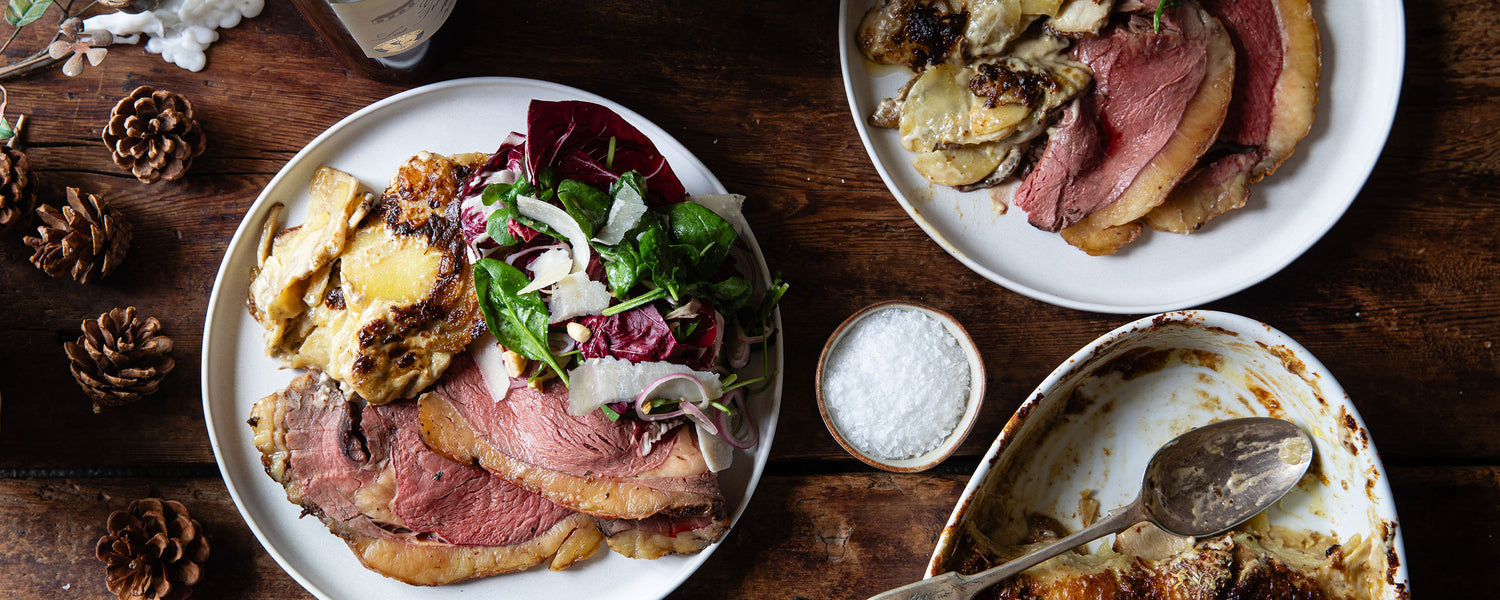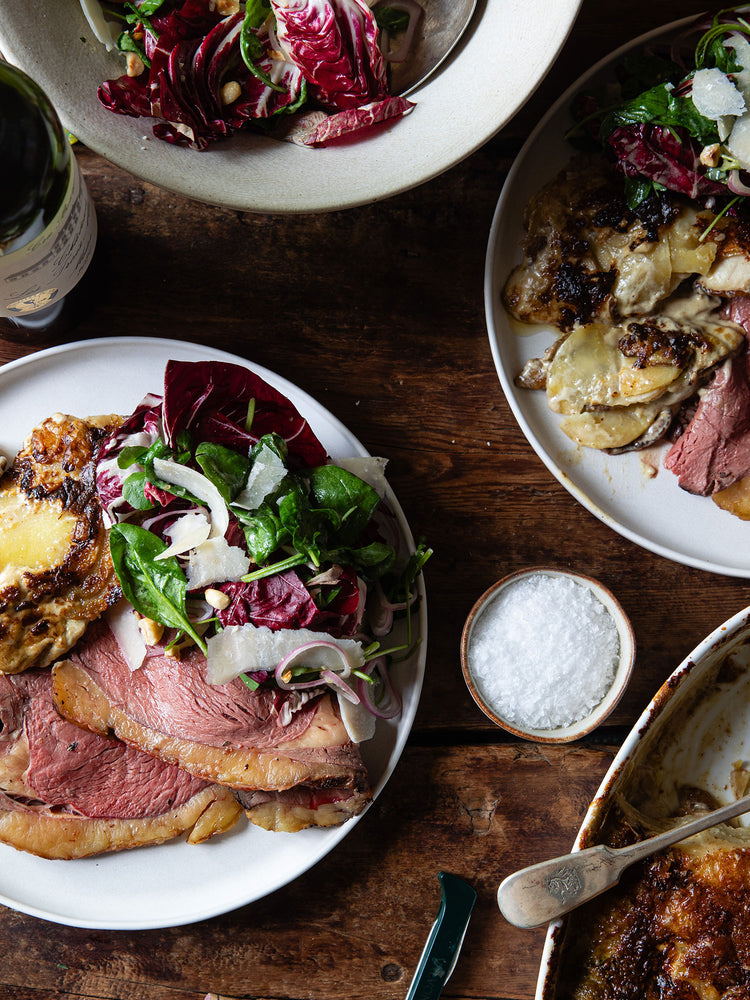The Swaledale Nutritionist’s Meat Box
- Delivered fresh
- suitable for freezing
- native breed
- grass-fed
- cook on the bbq
Product description
The Swaledale Nutritionist’s Meat Box has been expertly curated by Nutritional Therapist Phoebe Liebling BSc (Hons) DipNT mBANT rCNHC, and contains ingredients rich in essential vitamins and minerals, all selected to aid and support long term health.
Scientific research shows the importance of fuelling our bodies adequately at a cellular level, and that longevity of life and health fortification are just some of the many benefits that can result from a nutritious diet.
What's in the box?
- 2 x 220g Featherblade Steaks
- 2 x 180g Lamb Leg Steaks
- 2 x 180g Flat Iron Steaks
- 2 x 180g Onglet Steaks
- 4 x 100g Minute Steaks
- 1 x 500g pack Marrow Bones Canoes
- 1 x 540g pack Minced Beef
- 1 x 500g pack Diced Beef Shin
- 1 x 350g pack Beef Liver, Sliced
- 1 x 350g pack Lamb Liver
- 2 x 1 kg pack Beef Bones
- 1 x Ox Heart
Phoebe Liebling writes:
"When approaching dietary choices from a health perspective there are numerous well evidenced differences in nutritional value to grass-fed and grass-finished meat. The contents of The Swaledale Nutritionist’s Meat Box reflects a simple goal; to make our ingredient choices more efficient in terms of delivering both flavour and health fortification, but then there is also a note to be paid that some cuts provide further functional food influx into our routines. This is defined as health benefits in excess of their basic nutritional value. Read more below as to why I've selected the particular products I have.
Ox Heart
The nutrient rich heart contains therapeutically significant quantities of B-complex vitamins, iron, zinc and selenium in forms we can readily absorb. The specific combination of these cements the heart as a cardioprotective foodstuff, and also helps maintain optimal function of the nervous system and brain. It has a naturally low fat content making it a great choice for those who are tracking the overall balance of macronutrients within their diet.
Beef Bones
Large bones are abundant in minerals; they contain everything we need to reinforce our own skeletons, down to the connective tissue, muscles, joints, bones, skin, hair, eyes and gut integrity. When you gently simmer bones to make a broth, you extract all of that goodness in addition to elements of collagen and cartilage including glucosamine and chondroitin which prevent degradation of our joints. The amino acid gelatine gives stock its gelatinous quality but also holds water which encourages efficient gut transit. Bone broth is so nourishing for the gut that it is used as a first line treatment for inflammatory bowel disease.
Marrow Bone Canoes
Marrow is a delicious delicacy, but also a powerhouse providing vitamins A and K2, plus zinc, iron, boron, manganese, selenium, omega-3 and omega-6. In addition to contributing to the same benefits as bones, marrow has applications that quell chronic inflammation and protect against neurodegenerative diseases such as Alzheimer's and multiple sclerosis (MS).
Grass-fed Lamb
Grass-fed lamb is one of the richest sources of the mineral zinc available to us. Despite being a mineral our bodies urgently require, zinc is chronically lacking in most modern diets. Zinc insufficiency is a leading cause of fertility problems, poor immune function and appetite dysregulation to name a few concerns.
The key differentiator between intensively raised lamb and Swaledale Butchers' grass-fed lamb is the omega-3 content and its ratio to omega-6. Omega-3 is neuroenhancing, neuroprotective and vital for long term avoidance of disease, and it needs to be in balance with or preferable to omega-6 status to be able to action these benefits. Most standard diets will create a swing of 25:1 omega-6 to omega-3, so actively including food choices that counter this is incredibly important.
Grass-fed Beef
Grass-fed beef is preferable to grain-fed beef for its omega 3:6 ratio, as well as being naturally lower in saturated fat, which is important when promoting heart health. Saturated fat is an important inclusion in our diets but should only comprise 10% of total dietary fat intake, which grass-fed beef will happily contribute to but not exceed. Grass-fed beef also contains up to 400% more CLA (conjugated linoleic acid) than grain-fed beef; CLA guards against cardiovascular concerns and cancers whilst also aiding lean muscle mass maintenance and decreasing body fat percentage.
In terms of micronutrients, grass-fed beef shows higher levels of B-vitamins, the fat soluble vitamins A and E, and certain antioxidants such as beta-carotene that imbue the meat from the organic food the animals graze on too."
Cooking advice
Chef's suggestions
Background
Customer Reviews
Recommended for You
Benefits of Swaledale Butchers
-

Always Fresh, Never Frozen®
Orders received before 9am are freshly prepared and shipped via DPD for next-day delivery. We serve the whole of the UK, excluding the Channel Islands, Northern Ireland, and certain areas of Scotland.
-

Unparalleled Quality
For over ten years, our meat has been celebrated in Britain’s finest restaurant kitchens. We’re proud to work with native breed farmers and to genuinely support sustainable, traditional farming - values that define Swaledale Butchers."
-

Sustainable & Traceable
We partner with select farms and trusted local abattoirs, ensuring high animal welfare standards and complete traceability for all our products.





